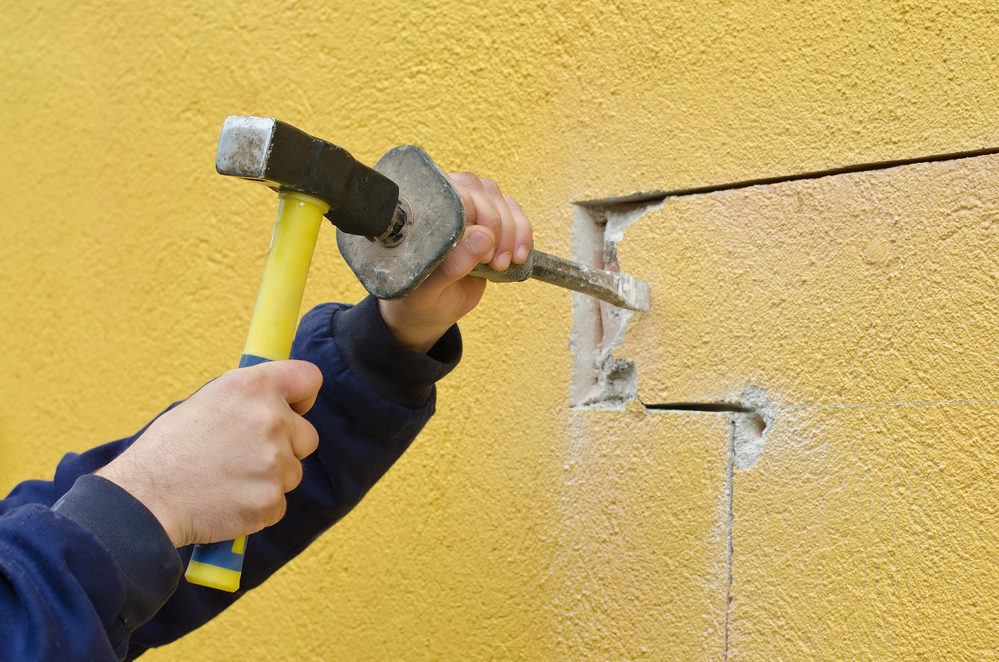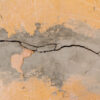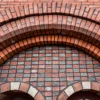Stucco is a popular choice for exterior surfaces because of its durability and aesthetic appeal. However, over time, stucco surfaces may develop cracks that not only compromise their appearance but also the integrity of the structure. Here, we will guide you through a step-by-step process to repair a crack on a stucco surface. This can help you see to it that your building remains safe and visually appealing.
Not a do-it-yourselfer? No worries. Premier Building Restoration, Inc. handles stucco crack repair, stone restoration, concrete repair, and so much more.
Understanding the Causes of Stucco Cracks
Before we explore the repair process, it is important to understand the common causes of stucco cracks. By knowing the underlying reasons, you can address the issue effectively and prevent future cracks from forming.
Settlement of the building is one leading cause of stucco cracks. As the foundation settles over time, it places stress on the stucco exterior which can lead to cracking. Excessive moisture exposure is another factor, whether from rain, irrigation systems, or runoff. When stucco is exposed to consistent moisture, it expands and contracts, eventually cracking under the stress. Large temperature fluctuations produce a similar effect – as temperatures rise and fall, the stucco expands and contracts until cracks emerge.
Finally, poor installation techniques – like failing to properly seal the stucco or not providing enough reinforcement mesh – can set the stage for future cracking when the stucco suffers stress over time. Understanding the science behind stucco crack causes allows us to pinpoint solutions accurately.
Assessing the Crack
Before starting the repair process, it is important to assess the crack on your stucco surface. This evaluation will help determine the right steps and materials needed for the repair.
Here’s how you can assess the crack. First, clean the area around the crack using a brush or broom to remove any loose debris or dirt. Next, inspect the crack carefully, noting its size, shape, and depth. It’s important to view and note the specifics of the crack itself. Finally, check if there are any signs of moisture or damage behind the stucco by looking for discoloration, soft areas, peeling, etc. Assessing for leaks and water intrusion behind the wall is key prior to repairing the exterior surface.
Taking the time to thoroughly evaluate the crack on your stucco helps you understand the full scope of the issue and prepare accordingly before starting repairs.
Gathering the Necessary Tools and Materials
Repairing a crack on a stucco surface requires specific tools and materials. Before you begin the repair process, make sure you have gathered all the necessary items.
You will need a stucco patching compound to fill and seal the crack itself. An acrylic bonding agent is also required to help the patch blend with the surrounding stucco. Use a trowel for applying the stucco patch smoothly and evenly over the crack. A masonry brush allows you to brush off any loose particles or debris before patching. Have a bucket on hand to mix the stucco compound in. After the patch has dried, use a sanding block to smooth it out. Finally, to touch up the patched area with paint, you’ll need a paintbrush.
With these basic tools and materials in your toolbox, you’ll be prepared to repair stucco cracks successfully.
Stucco Crack Repair Process
Now that you have assessed the crack and gathered the necessary tools and materials, it’s time to start the stucco crack repair process. Follow the steps below.
- Clean the Crack: Use a masonry brush to remove any loose stucco particles from the crack. Make sure the crack is free from debris and dirt.
- Apply the Bonding Agent: Use a paintbrush to apply an acrylic bonding agent to the crack. This agent will help the patch adhere to the existing stucco surface.
- Mix the Stucco Patching Compound: Follow the manufacturer’s instructions to mix the stucco patching compound in a bucket. Make sure the mixture has a smooth consistency.
- Fill the Crack: Using a trowel, carefully fill the crack with the stucco patching compound. Smooth the surface and feather the edges to blend it with the surrounding stucco.
- Cure and Finish the Repair: Allow the patch to dry according to the manufacturer’s instructions. Once dry, use a sanding block to smooth the surface further. If necessary, apply a coat of paint to match the color of the existing stucco.
You Can Rely On Premier Building Restoration, Inc. for Stucco Repair and More
As the premier provider of historic building restoration services in the region, we – at Premier Building Restoration, Inc. – pride ourselves on preserving history with trust, loyalty, and the highest quality craftsmanship. Our expert teams uphold dependability, integrity, and drive in every project. We build lasting partnerships through honest communication and exceeding expectations.
Reach out with our online form or call 215-233-4444 to learn more about our stucco repair, masonry restoration, and waterproofing services for residential and commercial properties. We’re the company you can count on to get the job done right.










